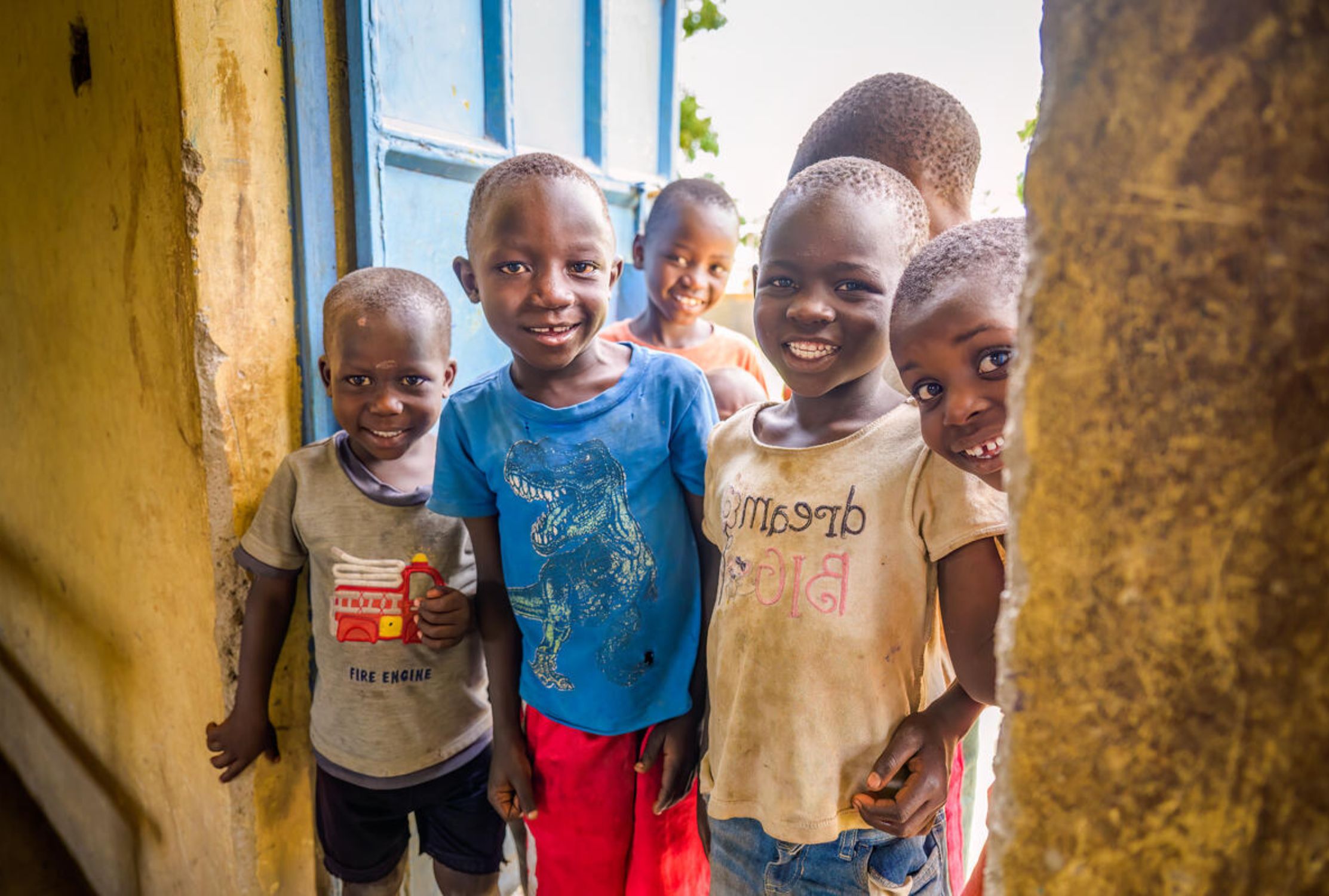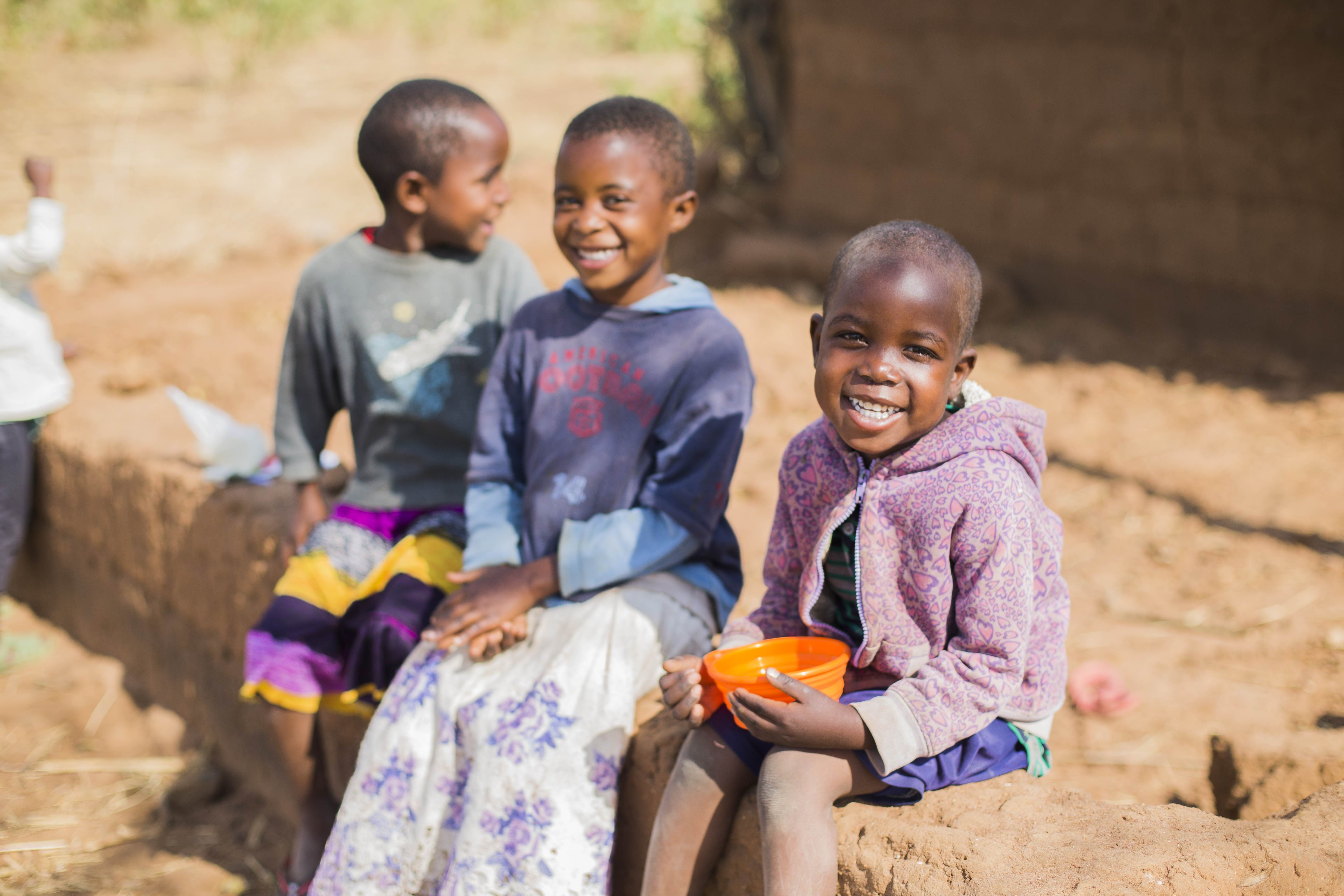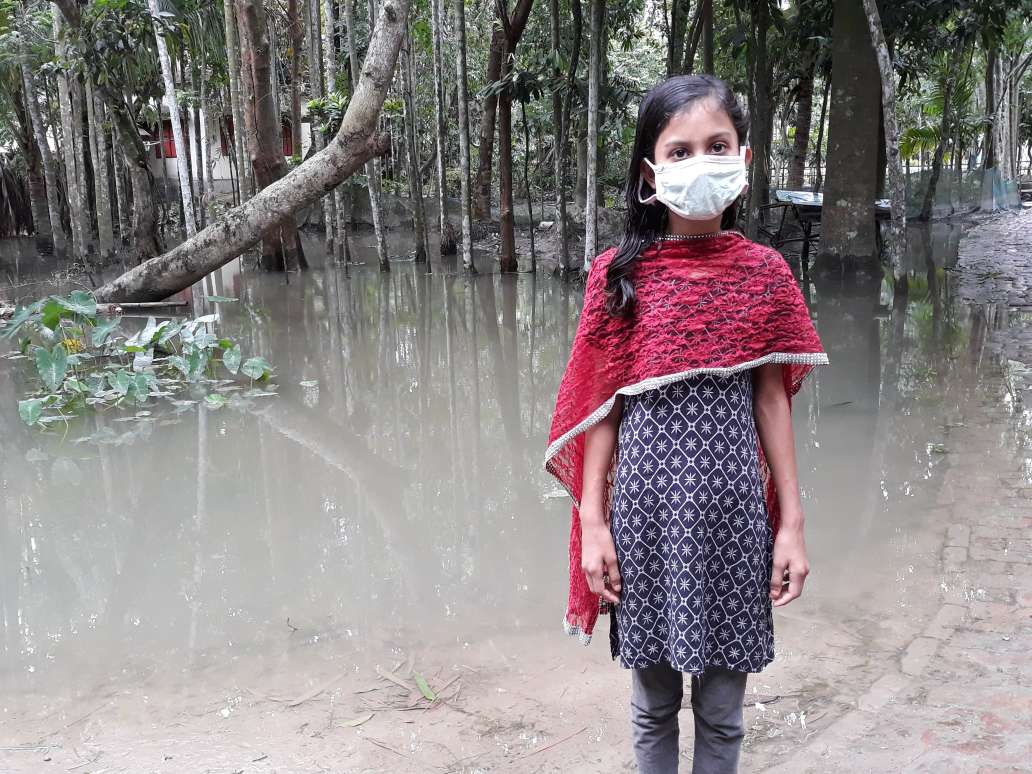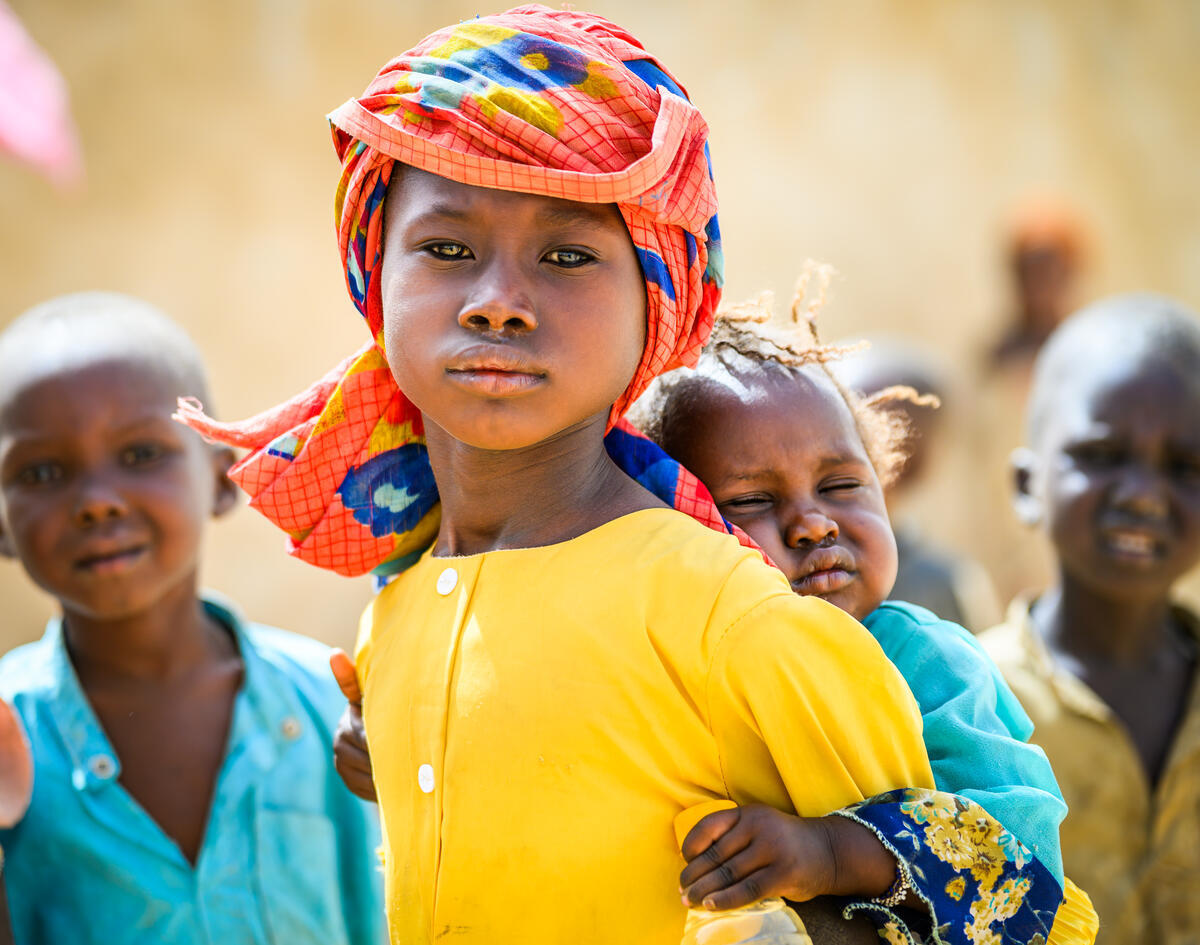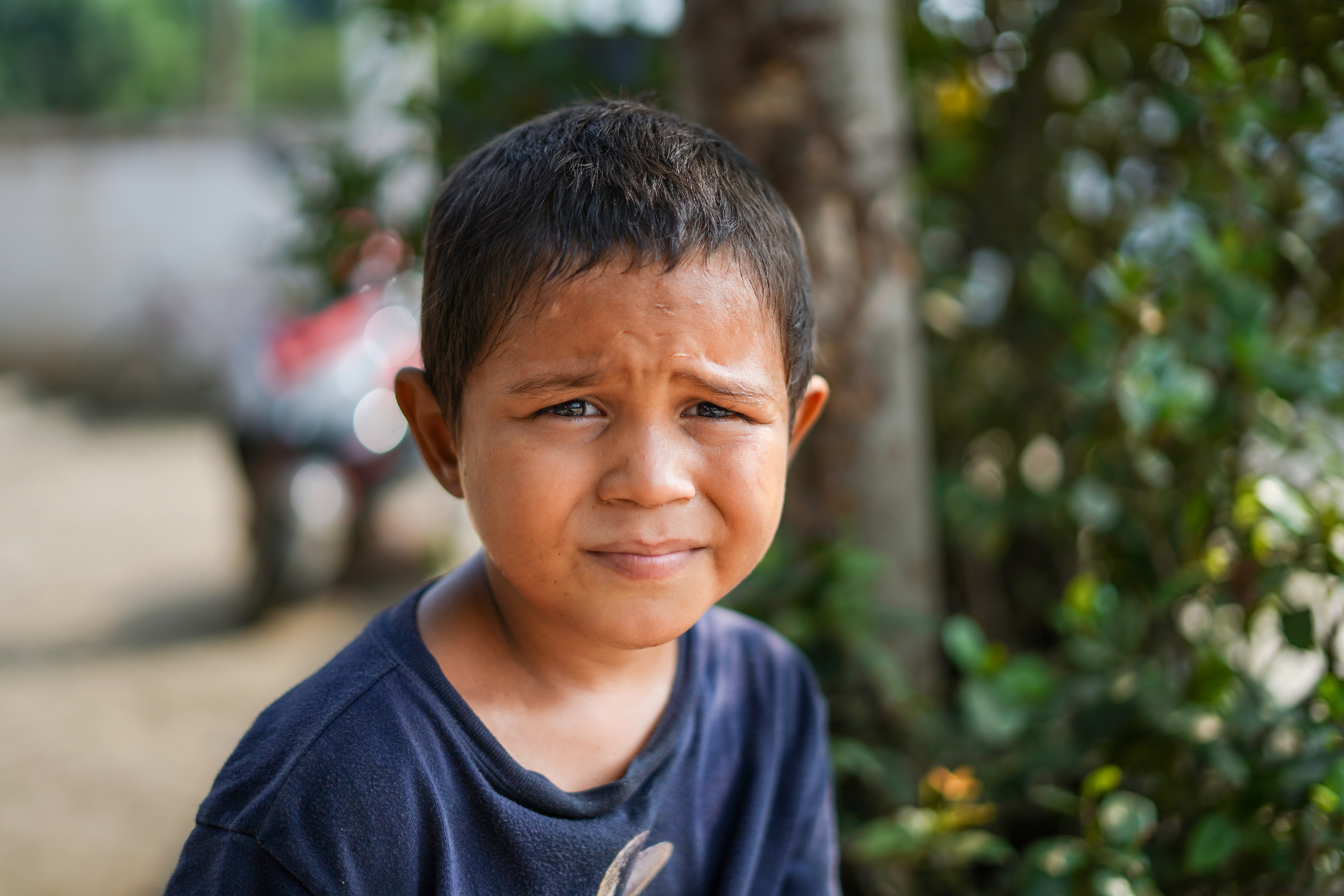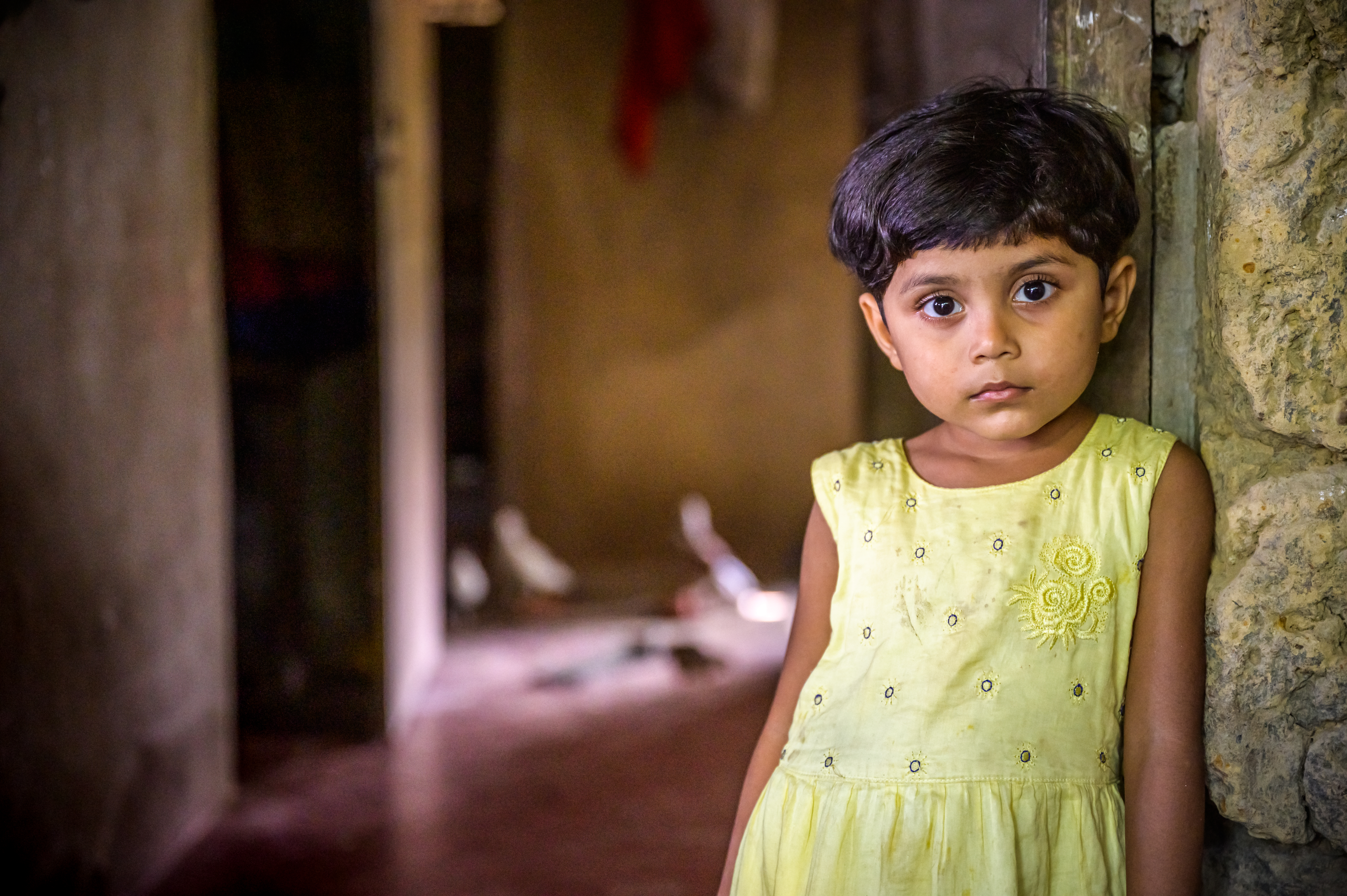
Tackling child poverty and inequality
Who are the most vulnerable?
Child poverty
According to UNICEF, more than 700 million people live in extreme poverty – that is one in ten of the world’s population. Over half are children. And the poorest children are twice as likely to die in childhood than their wealthier peers.
Children growing up in poverty often lack food and have limited access to adequate sanitation, shelter, health care and education. Both poverty, and inequality due to age, gender or race, can deprive them of future opportunities for decent employment, participation and decision making and also expose them to violence and exploitation. The COVID-19 pandemic has only made this situation worse.
Celia Donald is World Vision UK’s Programme Knowledge Advisor. On the topic of tackling poverty and inequality, she says:
“It’s not just the lack of food or clean water that’s so heartbreaking – it’s the lack of hope or having the voice to influence change. Women and children are disproportionately affected by poverty and deeply entrenched inequality, which is often intergenerational.
This cycle of poverty and inequality must be broken for sustainable positive change to occur.”
The most vulnerable children
Of those children in poverty, there are some we call ‘most vulnerable’, which we define by the accumulation of vulnerability factors they experience such as:
- serious discrimination
- abusive or exploitative relationships
- extreme deprivation
- vulnerable to catastrophe or disaster
- disability
The more of these factors that children experience the more vulnerable they become until they are most vulnerable.
“They are our highest priority,” explains Celia. “We’re listening to these children and learning about how well we’re responding to their needs, through our most vulnerable child research."
LEARN MORE: Listening to the most vulnerable children
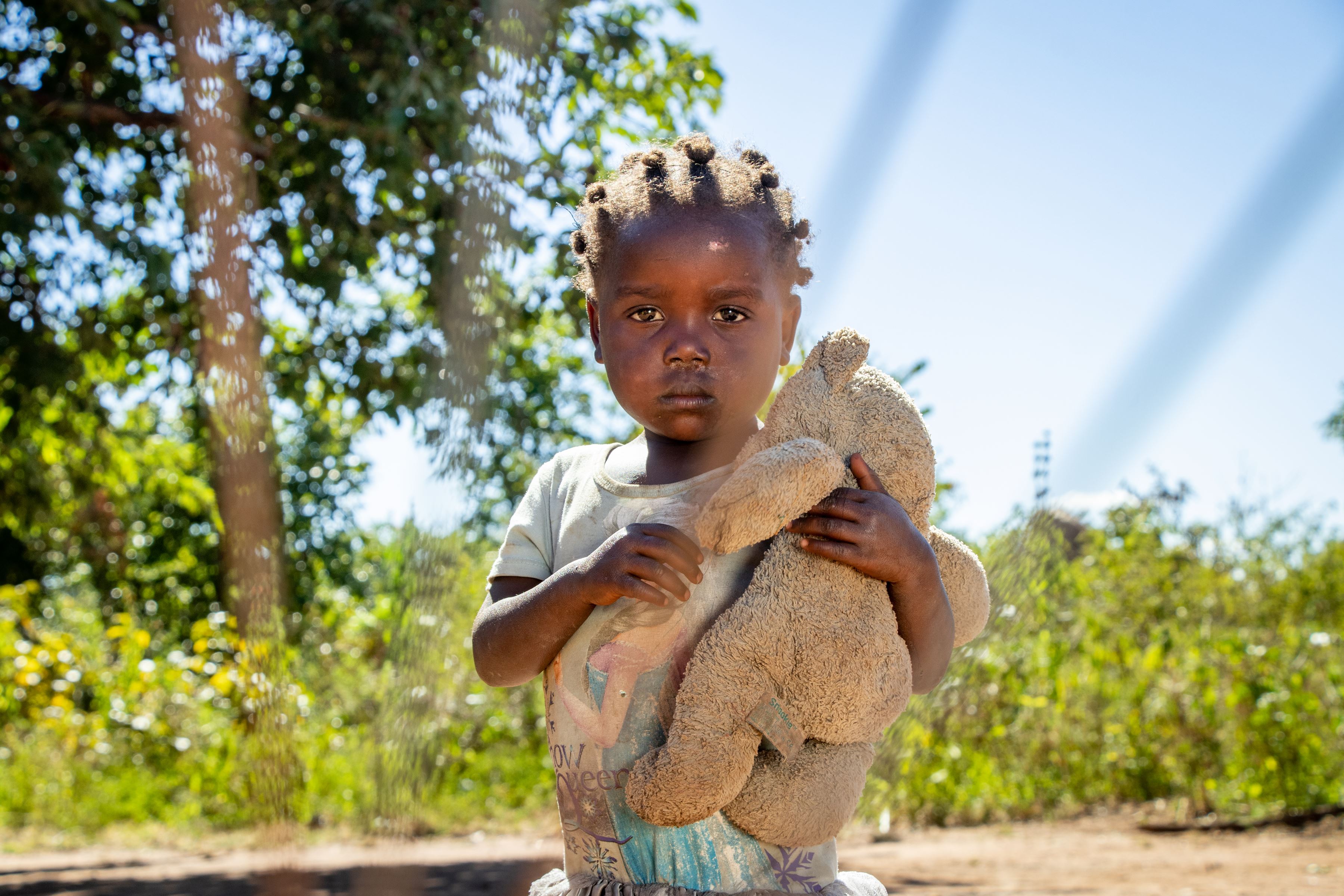

Celia Donald
Programme Knowledge Advisor, World Vision UK
Celia adds: “World Vision is working to change things, not only improving the lives of children now but also tackling inequalities and poverty.
“We prioritise children, especially the poorest and most vulnerable, and empower them, together with their families and communities, to improve their well-being. Along with providing basic necessities, such as food and access to clean water, we also address the root causes of child vulnerability – such as economic injustice or harmful beliefs and practices like child marriage or forced labour. We also seek to strengthen local leadership and community resilience.
“Our focus is on helping the most vulnerable children overcome poverty and experience fullness of life. We protect children today and empower them for tomorrow.”
But the challenges of child poverty and inequality don’t end there
By 2030, 80% of the world's poorest people will be living in places that are very dangerous for children. Experts call these dangerous places "fragile contexts". Places where chronic instability, conflict and violence leave large numbers of children caught in a trap of extreme vulnerability, coupled with crippling poverty.
Children in fragile contexts live on a knife-edge and are extremely vulnerable to violence, exploitation, abuse, and neglect.
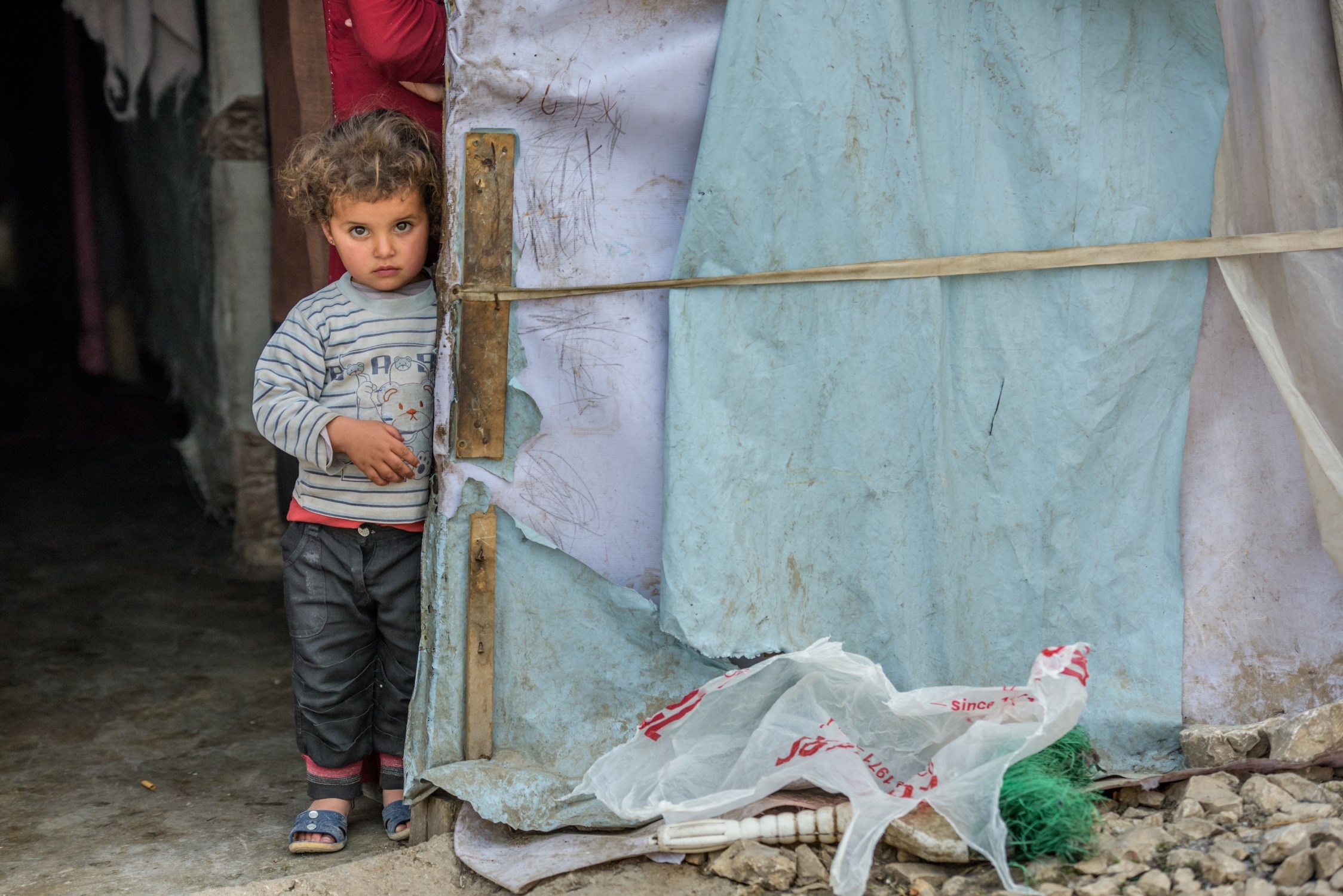
Displaced
As many as 68.5 million children and families have been forcibly displaced from their homes – the largest numbers of refugees and displaced people since World War II. The vast majority come from “fragile states”. World Vision has worked in fragile states for over three decades to provide life-saving support and durable solutions for the world’s most vulnerable children.
Fragile states
Jonathan Papoulidis, World Vision International’s executive advisor on fragile states, explains:
“A fragile state is a broken place. The social contract between state and society is broken because people don’t see their government as accountable or responsive to their needs or treating citizens fairly.
Public institutions are broken and unable to provide critical services like education, health, and water – making children and communities more vulnerable to disease, disaster, hunger, and malnutrition and also less able to read and write."
Ground zero for poverty
“Fragile states are rapidly becoming ground zero for extreme poverty. By 2030, some project that an alarming two-thirds of the world’s extreme poor will live in fragile states.
“What’s more alarming is that extreme poverty has a child’s face. The majority of populations in fragile states are made up of youth… [World Vision] programmes that directly assist children, households, and communities make a big impact in fragile states, since governments are often unable to provide basic services.”
World Vision support includes water, food, child protection and education, while working with partners: churches, donor governments, corporations, and individual supporters across the world.
A light in a place of darkness
Jonathan adds:
“My hope is that these affected children and families see World Vision as a light in a place of darkness – that they know our leaders, staff, and generous engaged supporters will be there for them. So many of these children have such hopes and dreams of a brighter future, and World Vision wants to nurture that hope. Our work is focused on the well-being of children in the hardest places, as a foundation for their intellectual, physical, moral, and spiritual growth and contribution to the world.
“The journey out of fragility and toward resilience can take decades. But we don’t have to wait that long to help change the lives of children. We continue to have impact in local communities for better health, education, livelihoods, nutrition, and gender equality.”
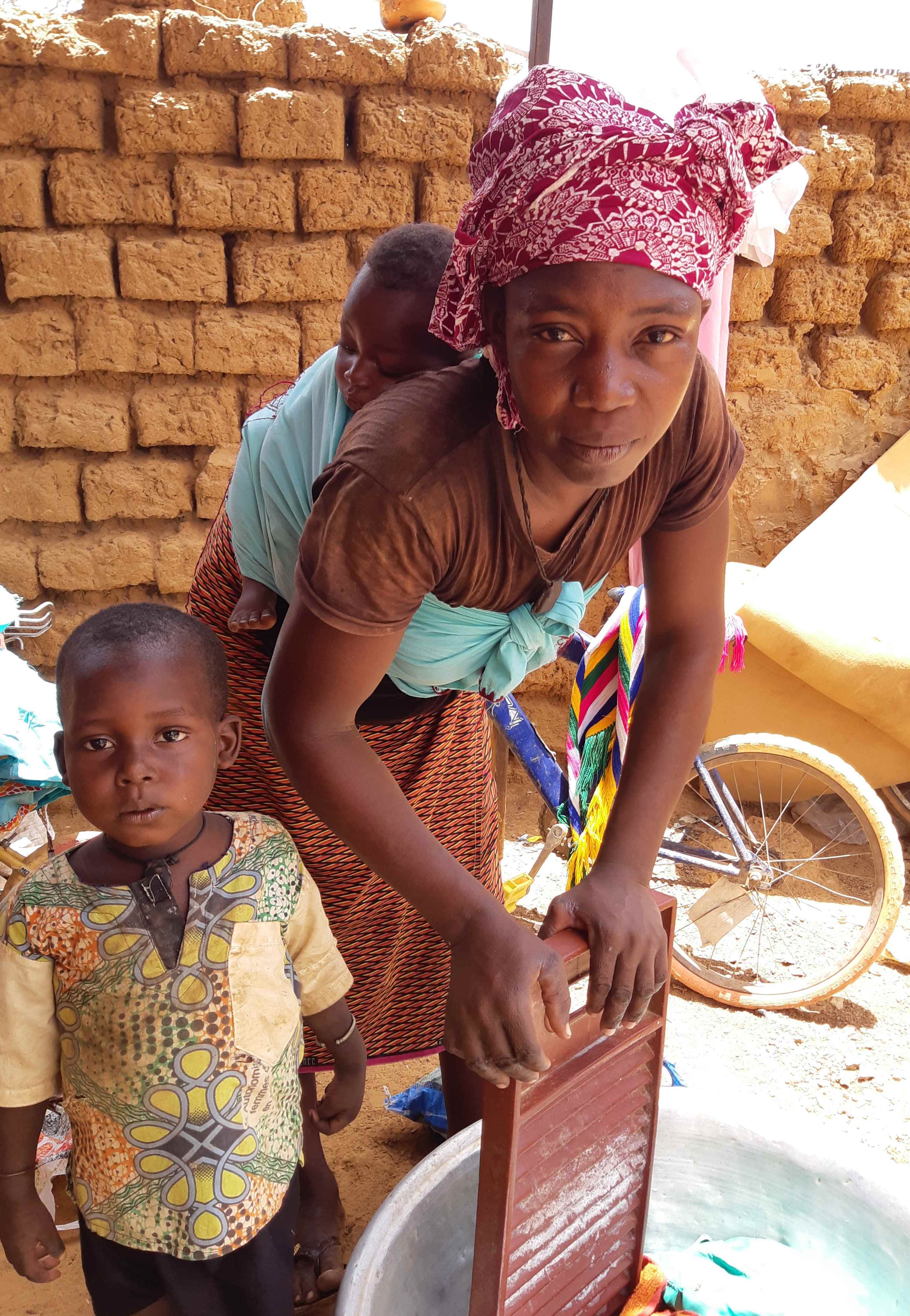
A family torn apart
One of the countries in World Vision’s top 12 most fragile contexts is Mali in West Africa. Andre Yebedie, Cluster Programme Manager at Koro, recounted this story of fear and joy in May 2021.
In the past few years, the central and northern regions of Mali have been marked by a deep insecurity, resulting in the massive displacement of people and significant destruction of livelihoods. Koro District is among the most affected areas. As a result, its local population, in particular women and children, are being affected by inequality and poverty, and have lost hope for a better future.
“I used to live in a village not far from Burkina Faso—Mali’s neighbouring country,” says 25-year-old Habiba. “One early morning a group of armed men attacked my village and took everything they could. I was alone with the children. My husband was visiting some friends in a close-by village. Unfortunately, I didn’t have a way to let him know what was happening with us.”
After the attack, she was forced to take her three children and flee the village, without knowing her husband’s whereabouts, and seek refuge and a job in Koro town.
Her husband Yacouba desperately searched from village to village, trying to find any information that could have helped him find his loved ones.
She could not feed her children
With slim chances of returning to her village and without hope of ever seeing her husband again, Habiba began collecting gravel and selling it to house constructors and earned money by washing clothes. But the pay didn’t bring in enough for the children’s needs. “I left my village empty-handed,” she says. “As a result, at my arrival in Koro, I could not feed the children.”
Thankfully, Habiba benefited from the food distribution programme run by World Vision’s emergency response in Koro. The food received – along with water purification products, cooking utensils, beds, and mosquito nets – meant she could feed and support her children for three months. The distribution also had another life-changing effect. After many months of unsuccessful searching, her husband Yacouba was able to find his family –through friends who also received food at the distribution point. He quickly joined them.
“For me, this food distribution was not only an aid. Thanks to this, my husband was able to finally find us,” Habiba says.
Yacouba adds: “I was so worried about my family; I had prayed for their safety. I was delighted to be reunited with Habiba and the children.”
Today, they live in a house that a host family lent them and have food to eat. The happy father added that his wife recently gave birth to twins.
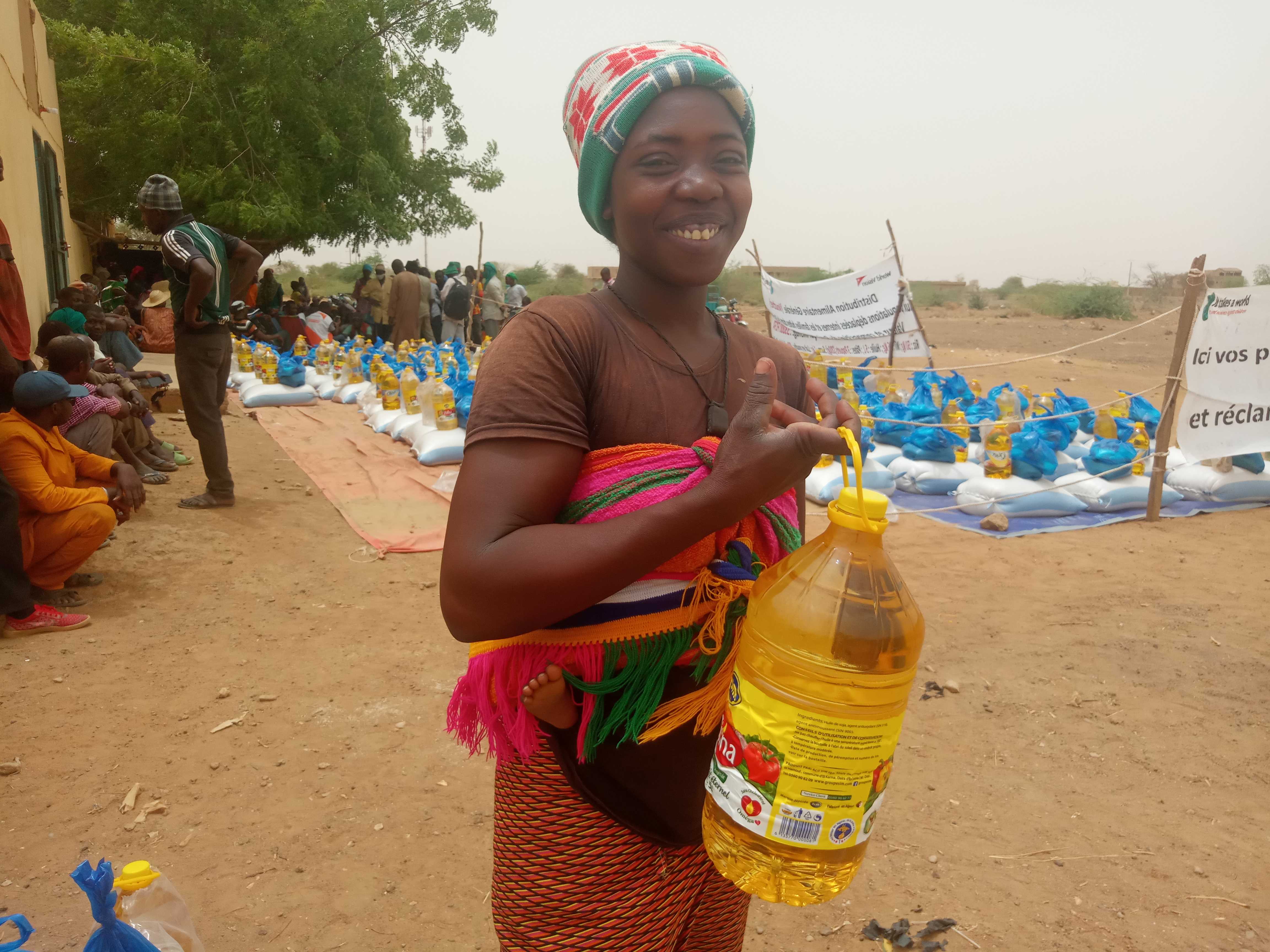
World Vision kept my children alive
“I am grateful for the support provided by World Vision because it kept my children alive,” he says.
“I wish World Vision could continue to support my family, by helping me send our 4-year-old child to school next year. My greatest desire is for the conflict to end so that we can return to the village and live peacefully.”
This programme is working to support communities affected by poverty and inequality. So far, it has provided food assistance and helped to prevent child malnutrition among displaced families in Koro by reaching 1,460 children and 1,190 adults with food.
Celia concludes, “The scale of the issues may seem overwhelming, but World Vision is making a real difference to whole communities and to the lives of individuals. We seek to report this in our annual impact reporting.
“And our thanks to everyone who supports our work – you’re transforming lives.”

